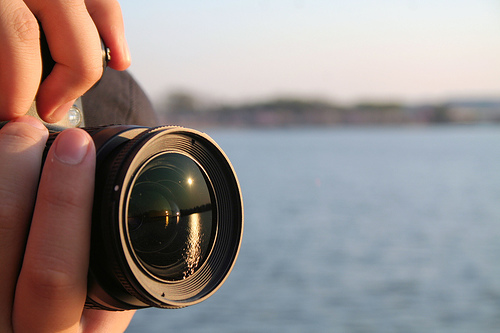For those of us blessed with sight, vision is the most important sense through which we recognise the world around us. Before we are old enough to understand words, we see images that awaken in us the wonder and curiosity of our future creativity.
It is important for writers to realise this. If you can ‘see’ your characters, scenes, and settings, you are half way to showing them to your readers, so they can ‘see’ them, too. This applies equally to non-fiction and fiction.
Some people have a particularly acute visual sense, thinking in images, patterns and spatial relationships, but even if you are not one of these, it is easy to strengthen and develop your visual perception. Photographs are a fun and effective way of doing this, and have long been an essential tool in my own writing.
It is an old joke that the typical tourist ‘clicks it now and sees it later’. Obviously, we risk missing the full ambience of a place if all we do is rush around taking pictures, but there is value in taking photographs to study later, even long after the event. And it allows you to stare at people in a way you would not dare to do otherwise.
Whether you are using your own photographs, or other people’s, here are some suggestions for using them to strengthen your writing:
Character:
Holiday snaps or portraits, from pictures of people you can discern the contours of faces, expressions, body language, and their responses to the proximity of others. Studying images of someone similar in age and status to your character can help you get to know them intimately, the way your readers need to know them.
Scene:
Photographs of public and private places where people work, play, or simply travel through, enable you to appreciate how scenes work, why action changes, and how actors affect each other. Still photographs freeze each movement, making them more visible. Once you use this knowledge, your characters’ dialogues and actions will have more depth and context.
Setting:
Use landscapes and interiors to experience the setting of your story while you write, whether a dystopian desolation of rocks, ruins and desert; the mystery of forest or foggy streets; the visual clamour of a cityscape, or the intimacy of a park bench, a bar booth, or a double bed. What details do you see? What do you feel? Let the reader see and feel through your eyes.
Start using a photographer’s eye and you will soon realise how much has been passing you by without you noticing.
And there is another reason to learn how to use pictures. Photography has never been easier, and visual impact has never been as important in communication as it is now. Images are expected. Your magazine articles, for example, stand a better chance of being accepted if you can provide good photographs, and if you have a blog, colourful imagery will draw attention to your posts.
About the Author

Photo credit: flickr.com_Bien Stephenson













